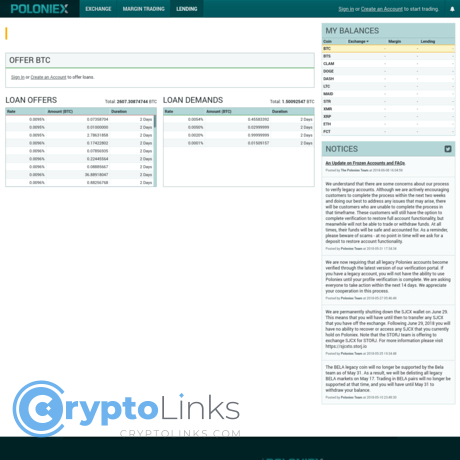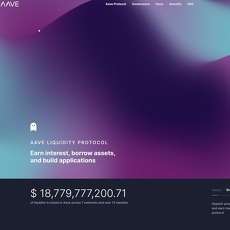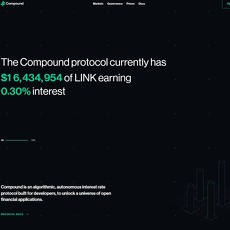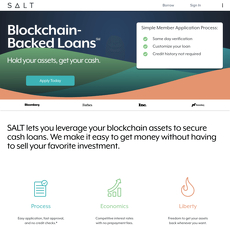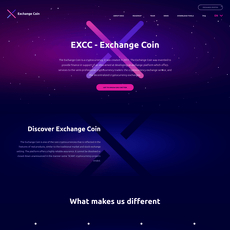Poloniex Lending Review
Poloniex Lending
poloniex.com
Poloniex Review Guide: Everything You Need to Know About this Exchange
Have you been thinking about using Poloniex but found yourself puzzled lately by the flood of conflicting information? Maybe you've heard a lot about policy changes, withdrawal limits, or recent business decisions, and now you're not sure if Poloniex is still the right crypto exchange for you.
I totally get it; knowing which crypto platform you should trust these days can be tricky, especially when news spreads so fast and seems to change even faster. Don't worry—I'll keep things clear, friendly, and easy for you to quickly understand.
Common Issues People Face When Considering Poloniex Exchange
From what I've seen around forums, social media, and crypto groups, Poloniex has created quite a few questions lately. Here are some key issues you'll probably recognize instantly:
- Are traders from the United States still allowed to use Poloniex?
- How much crypto can you withdraw from Poloniex without going through KYC verification?
- Is the platform still trustworthy after all the recent drama around its recent decisions?
Let's be honest—any uncertainty around these areas can be a real headache when you just want clarity on your crypto exchange options. So, let me help you shed some light.
What if You're a US-based Trader?
One of the biggest question marks right now is the policy surrounding US-based traders on Poloniex. Recently, Poloniex announced significant restrictions for American customers that have certainly caused some confusion and concern. Rumors circulated—some true, some exaggerated—leaving many traders unsure about whether they're allowed to trade on Poloniex anymore or not.
So yes, if you're from the US, you need absolute clarity here: I'll bring you straightforward answers based on official statements and credible sources very soon. You don't need guesses—you deserve clear facts. I promise you won't stay in the dark on this much longer.
Unsure How Much You Can Withdraw Without KYC?
Many crypto traders, and maybe you're one of them, like maintaining some level of privacy when trading. I totally understand that—crypto was made to empower privacy, right?
Poloniex's policies around KYC (Know Your Customer) verification and withdrawal limits have also sparked confusion lately. Traders often wonder, "How much can I withdraw without losing anonymity? What's the realistic difference between Level 1 and Level 2 account verification?". I've seen these questions repeatedly asked online, and it's clear users want the cold, hard facts on how far they can keep their privacy intact while trading on Poloniex.
Stick with me and I'll clearly lay out all the numbers and details you'll need to quickly get what's right for you, without spending hours searching—you can thank me later for keeping things simple!
Is Poloniex Still Trustworthy After Recent Changes?
Lastly—and importantly—a solid crypto exchange should absolutely inspire trust. But lately, the Poloniex reputation has been tested with its changing ownership and turbulent policies. Social media buzz and trusted crypto forums have both painted mixed signals about this exchange.
Maybe you've seen headlines that made you raise an eyebrow or two. Maybe someone you know had an experience that made you hesitate. A lot has gone down, sure—but is Poloniex still a platform you can confidently put your crypto into?
You deserve straight talk, not third-hand rumors or Twitter threads full of speculation. So here's what we'll do—I'm going to discuss recent red flags openly, honestly, and clearly so that you're fully informed and ready to make your decision.
Sound good? Great!
But first, let me tell you quickly how Poloniex got started and what its story has been—because understanding that background will shed some serious light on what's happening now. Intrigued to see where all these controversies began? Stick around, I'll share that next.
Quick Background on Poloniex
I know your time is valuable, so let's quickly cut through the clutter and get straight to what Poloniex is really all about.
What is Poloniex and What Makes it Stand Out?
Poloniex is a crypto exchange platform that's been around for nearly a decade, providing traders with a wide range of coins and trading features. But what's its special sauce? Here's what sets Poloniex apart:
- Vast Cryptocurrency Selection: Unlike many exchanges that limit the coins you can trade, Poloniex surprises traders by regularly supporting new and emerging cryptocurrencies, giving traders more choices than typical crypto platforms. For crypto enthusiasts who love variety, Poloniex is a tempting candy store.
- Advanced Trading Features: If you're someone who likes to level-up your trading, Poloniex offers margin trading, futures contracts, and lending markets. These tools give you much more than basic spot trading – allowing savvy traders to grow their portfolio aggressively or securely hedge their positions.
- No-KYC Trading (Some Limits Apply): Privacy-conscious individuals appreciate Poloniex for still allowing limited trading without mandatory KYC (Know Your Customer) procedures. While there are withdrawal limits tied to different verification levels (which we'll clear up shortly), Poloniex clearly knows that privacy matters in the crypto world.
"In crypto trading, your selection of coins and privacy are the keys to freedom." – Anonymous
Quick Look at Poloniex's History and Recent News
Originally founded in 2014 by Tristan D’Agosta, Poloniex quickly rose to prominence powered mainly by its extensive altcoin support and user-friendly yet powerful trading interface. In 2018, crypto payment giant Circle acquired Poloniex for approximately $400 million, signaling high expectations and huge ambition.
However, the journey wasn't entirely smooth. After Circle's acquisition, Poloniex's direction began shifting significantly—particularly when they announced that US traders were no longer welcome, raising eyebrows and causing frustration among thousands of loyal American customers. More recently, unspecified updates in their policies and ownership structures have left users somewhat concerned about transparency and reliability—making traders wonder:
Why exactly did Poloniex choose to move away from the US market, and what does this mean practically for traders like you? I'll clearly unravel these mysteries—stay with me, because what comes next might help you make a genuinely informed trading decision.
Poloniex's Decision to Shut Down for US Customers Explained
When Poloniex announced that it would be shutting down operations for US customers, it caught everyone by surprise. Even seasoned crypto traders felt puzzled, wondering "What just happened?" Or better yet, "Why now?" I'll clear up this confusion right away so you don't have to guess anymore.
Why is Poloniex Shutting Down US Operations?
The main reason Poloniex gave for pulling the plug on US customers came down to regulatory challenges. According to an official statement by Circle, Poloniex's parent company at that time, serving US traders had become increasingly difficult due to the evolving regulatory landscape. Tightening compliance requirements from agencies like the SEC and CFTC in the United States created high barriers for exchanges like Poloniex to smoothly carry out business without encountering legal hiccups.
"Consistent with the evolving US regulatory environment, we regret to announce that Poloniex will no longer be able to serve US-based traders." – Circle, official announcement.
Simply put, Poloniex decided to refocus its operations exclusively on international customers to avoid getting tangled in tougher, strict US financial compliance laws.
When Did This Change Take Effect and What Does It Mean Practically?
Poloniex made this announcement back in late 2019 and quickly began taking concrete actions to end support for US users starting November 1 of the same year. On that day, US traders found themselves unable to place new trades or deposit funds on the platform anymore. Furthermore, Poloniex required US-based accounts to withdraw their funds completely by December 15, 2019.
Practically speaking, if you're a crypto trader living in the US today, signing up or actively trading on Poloniex just isn't an option anymore. Existing traders had to seek alternative platforms within a tight window, generating anxiety and confusion for many who hadn't anticipated the abrupt shift.
This means less convenience and more hassle—especially for long-time US-based customers who built strategies around this exchange.
Are There Alternatives for US Citizens?
If you're based in the US and feeling frustrated after losing Poloniex, don't stress. There are several reputable exchanges that warmly welcome traders in your shoes. You're absolutely not stuck with fewer options just because this exchange said goodbye to US citizens.
Here are a few solid alternatives you might want to check out:
- Coinbase: One of the most established US-friendly exchanges with high liquidity and intuitive UI—great if simplicity matters to you.
- Kraken: Known for strong security credentials, low fees, and wide crypto pairs. Ideal if you're looking for an exchange that's professional, secure, and US-compliant.
- Gemini: Highly regulated, beneficial if trust and compliance matter a lot to you.
- Binance US: The tailored US version of Binance, offering a large variety of crypto assets designed specifically for Americans.
Wondering what makes non-US crypto traders still choose Poloniex today? Is it even worth exploring Poloniex if you're outside the United States? Keep reading—I'll help you understand exactly what Poloniex can offer users worldwide that makes it still highly relevant for many traders.
Using Poloniex Outside the US: What's Good About it
If you're not residing in the US, you might be curious if Poloniex still holds the charm and convenience traders once loved. Let's be real—you deserve to know if it still packs a punch, especially with so many exchanges competing for your attention. From my experience, Poloniex has some undeniable perks that have kept international traders engaged.
"Trading is not about being right. Trading is about being agile in your approach to the crypto market." — Anonymous Trader
Poloniex Key Features and Trading Tools
So what keeps traders dedicated, despite the shakeups recently? Here's a quick rundown of the standout offerings on Poloniex:
- Diverse Cryptocurrency Options: Poloniex provides access to over a hundred coins and altcoins, from top giants like Bitcoin and Ethereum to interesting smaller tokens, perfect if you want variety.
- Margin Trading and Futures: Want to amplify your trades with leverage? Poloniex provides easy tools to do just that, letting more experienced traders capitalize on crypto volatility.
- Crypto Lending and Staking: Want to sit back and earn passively? Users appreciate Poloniex's staking options and lending pools such as TRON (TRX) and Cosmos (ATOM), which can offer competitive returns.
A recent crypto market report by The Block showed increased popularity in exchanges that offer streamlined margin trading and passive income opportunities. Basically, traders prefer platforms that let them earn, trade, and grow within one intuitive space, exactly what Poloniex does well.
How's the Fee Structure on Poloniex?
Nobody likes hidden fees or complicated fee schedules. Thankfully, Poloniex doesn't play those games—it's quite transparent:
- Trading Fees: You'll encounter a simple maker-taker fee model. Makers are traders adding orders (liquidity) to the order book and generally pay less, just around 0.09% or even as low as 0% if you're a high-volume trader. Meanwhile, taker fees hover around 0.09% and decrease as your trading volume goes higher.
- Withdrawal Fees: The withdrawal cost is pretty standard across exchanges. For example, withdrawing Bitcoin (BTC) from Poloniex currently costs around 0.0005 BTC, competitive compared to other exchanges.
- Deposit Fees: Great news—Poloniex doesn't squeeze you on deposits. Crypto deposits are free, just like most exchanges these days.
With clear costs and competitive rates, Poloniex stays appealing, especially if you frequently move in and out of market positions.
Trading Interface: Is Poloniex Easy to Use?
If you're anything like most traders I talk with, ease-of-use is always a top concern. Fortunately, navigating Poloniex feels very intuitive. The site's interface is clean, straightforward, and user-friendly, whether you're making basic spot trades or tackling margin and lending.
- You can quickly spot assets, order books, market history, and charts all clearly visible and easy-to-navigate in one window.
- Advanced users can easily integrate with trading bots or APIs, enhancing their crypto experience even further.
On Trustpilot and other review platforms, Poloniex receives a good number of positive comments specifically praising the platform’s ease of use and intuitive user interface. When you're busy juggling multiple crypto positions, a straightforward layout makes life simpler—something Poloniex keeps scoring high marks for.
But while Poloniex has plenty going for it beyond US borders, there’s something else super important worth talking about: withdrawal limits and their KYC policy. Wondering how much crypto you can withdraw without tossing away your privacy? I'll clarify that next in simple terms—because knowing exactly where you stand matters, right?
Withdrawal Limits and KYC on Poloniex: Plain and Simple
Let's tackle right away what's bugging most users: Can you still withdraw your crypto without handing over your whole separate identity to Poloniex? Privacy matters, and I respect your caution—so let's cut through the confusion clearly.
How Much Can You Withdraw Without KYC?
Right now, Poloniex lets you withdraw funds without completing any Know Your Customer (KYC) verification, but there's a limit you need to be aware of. Non-verified (Level 1) accounts are limited to a withdrawal of up to $10,000 USD per day. That might sound sufficient for most casual crypto traders, but if you're looking to move larger amounts quickly, you'll need higher verification.
To expand your withdrawal flexibility beyond this daily limit, you'll be required to verify your identity and advance to Level 2.
Account Levels Explained in Simple Language
I understand crypto exchanges sometimes love to use confusing or intimidating terms, but let me break it down nice and easy:
- Level 1 (No KYC) - All you do here is sign up with your email. You enjoy trading access, but remember, you're capped at $10K/day withdrawals.
- Level 2 (KYC verified) - You'll need to submit an official government-issued ID and verify your identity. Seems daunting, but now your withdrawal limits skyrocket to $500,000/day, plus you enjoy convenience features like faster withdrawal processing and improved account recovery in case something goes wrong.
It's like choosing between privacy and convenience. Both are perfectly valid choices—just depends what aligns with your priorities as a trader.
Should You Go Through KYC? Pros & Cons Quickly Explained
Before you rush to submit your documents or refuse outright, pause for a second. Here's a brief and unbiased look at both sides:
Pros:
- Higher withdrawal limits: If you trade sizeable amounts, going through KYC is practically a necessity.
- Better customer support: Verified users typically get quicker help if there's ever a problem.
- Account security: Verification often means additional safeguards for your account recovery and security.
Cons:
- Reduced privacy: You'll need to share identification documents, which some cryptocurrency traders try to avoid.
- Sharing sensitive Information: Risks associated in case of accidental data leaks or hacks.
- Regulatory exposure: KYC documents can be shared with governments and regulatory authorities if required.
"Privacy is not something that I'm merely entitled to, it's an absolute prerequisite." — Marlon Brando
This quote speaks directly to the heart of many in the crypto space, where privacy matters profoundly. It's up to you to weigh the convenience against privacy.
Now that you understand the reality of Poloniex's KYC requirements and withdrawal limits, you've probably started wondering another critical issue—can you actually trust Poloniex today after all the changes and controversies floating around recently? I'll answer that honestly in the next section!
Is Poloniex Still Reputable as a Crypto Exchange?
One big question keeps coming up whenever I'm chatting with crypto enthusiasts lately—is Poloniex actually still a reputable and reliable crypto exchange? If you're wondering the same thing, trust me, you're not alone. You've probably seen mixed reviews or heard a few eyebrow-raising stories about Poloniex, especially after all of its recent organizational shake-ups. Let's take a true, honest look together, so we can cut through the noise.
Poloniex's Reputation Over the Years
If you've been around crypto for a bit, you'll remember Poloniex as one of the earliest and most popular platforms to hop onto the crypto scene way back in 2014. At first, crypto traders flocked to it, personally, I recall Poloniex being a rockstar during the altcoin boom—the go-to platform for newly emerging cryptocurrencies. It quickly gained a trusted reputation for its extensive altcoin listings and solid liquidity.
But let's be real—things changed around 2017 to 2018. User complaints peaked, reporting slow customer support, withdrawal delays, and technical bugs. Fast forward a bit, following its acquisition by Circle, many expected big improvements. Were expectations met fully? Unfortunately, user opinions have stayed mixed, with lingering doubts surrounding policies such as those involving US-based traders.
Latest User Experiences and Reviews: What Do They Say?
To keep things crystal clear for you, let's sift through actual reviews. A visit to platforms like Trustpilot, Reddit, or various crypto forums immediately shows conflicting opinions:
- Positive side: Many traders still appreciate the simplicity of Poloniex's interface, trading pairs variety, and availability of margin and futures trading. One user on Trustpilot mentioned: "Despite the complaints, I've never had any issues. Withdrawals arrive within minutes, and trading feels easy and fast."
- Negative side: There's concern over transparency, withdrawal limits without KYC, and customer support responsiveness. A recent Reddit post summed up concerns by stating: "Ever since the new management, I've felt uneasy, slower updates, fewer responses—I don't feel as secure as I once did."
"A good reputation is more valuable than money." — Publilius Syrus
This quote rings especially true in crypto exchanges; reputation shapes trust. While Poloniex might retain loyal fans, the overall sentiment reveals caution and hesitation compared to the old days.
Comparison vs. Other Popular Exchanges Like Coinbase, Binance, Kraken
You might ask, "Ok then, how is Poloniex stacking up against heavy-hitters like Coinbase, Binance, or Kraken?" Let's quickly compare them on reputation, safety, and reliability:
- Coinbase: Widely considered with high trust and regulatory compliance, Coinbase carries a strong brand and stellar reputation. The downside? Higher transaction fees.
- Binance: Famous for unbeatable trading fees and variety, Binance remains hugely trusted globally though still in regulatory gray areas in some regions.
- Kraken: Well-respected older platform, transparent with policies and known for robust security. Each has varied user experiences, yet Kraken is notably praised for transparency.
Comparatively, Poloniex still remains a viable choice but has seemingly slipped behind these heavyweights in recent years. Slight caution among users surrounds support response times and transparency, aspects Coinbase and Kraken handle notably better.
Now, you're probably asking yourself–is it safe? Can you entrust your crypto holdings to Poloniex without worrying at night? After all, your hard-earned crypto deserves top-notch security and care.
How secure is Poloniex today, and should you personally feel at ease using it? That's exactly what I explore openly and honestly in the next section—so don't stop here. Let's walk through Poloniex's safety factor carefully together, step-by-step.
Poloniex Security: Should You Feel Safe Using it?
You’ve heard stories of lost funds, scary headlines about crypto hacks, and users desperately trying to regain access to compromised accounts. When it comes to something as valuable as your cryptocurrency, it’s normal to feel a bit anxious and wonder about platform security. So let's cut the noise and honestly explore whether you can trust your crypto assets with Poloniex.
"An ounce of prevention is worth a pound of cure." — Benjamin Franklin
Security Measures Poloniex Has in Place
First up, let's calm those nerves. Poloniex puts security front and center in the following ways:
- Cold Storage: Most funds are held securely offline in cold wallets, safeguarding your cryptocurrency holdings from hackers.
- Two-Factor Authentication (2FA): Poloniex strongly encourages you to enable 2FA to prevent unauthorized access, using apps like Google Authenticator.
- Email Confirmations & IP Whitelisting: You receive email confirmations for vital account activities such as withdrawals. Poloniex also allows IP whitelisting to ensure logins only happen from trusted locations.
- DDoS Protection Examples: Poloniex uses advanced intrusion detection systems and protection layers that actively prevent Distributed Denial of Service (DDoS) cyber-attacks.
- Ongoing Monitoring & Audits: Regular internal audits and continuous improvements to security infrastructure help Poloniex stay a step ahead.
I’ve closely watched exchanges rise and fall—believe me when I say strong security isn’t just a "nice-to-have," it’s a fundamental necessity for any exchange wanting to stay in business in this competitive market.
Has There Been Any Security Issues or Hacks?
Let's address the elephant in the room head-on. Yes, Poloniex had one notable security breach back in March 2014, where around 12% of its Bitcoin holdings were compromised. But here’s the interesting part: Poloniex promptly and responsibly handled the situation, transparently communicating with affected customers, and even reimbursed all lost funds. It was a strong, ethical response that helped maintain their reputation.
Since then—and we're talking almost ten years now—they've kept their nose clean, without any major security breach reported. Indeed, Poloniex seems to have learned significantly from the past and tightened its security measures extensively.
Quick Tips on Securing Your Poloniex Account
Even with Poloniex taking the right precautions, security is ultimately a partnership between you and your exchange. Here's what you can do immediately to keep your account safe:
- Enable Two-Factor Authentication (2FA) – Adding this simple secondary verification considerably boosts your account's security. Don’t delay, do this ASAP.
- Unique Passwords Are a Must – Don't reuse passwords elsewhere—seriously, create a strong, unique combination just for Poloniex using password managers like Bitwarden or 1Password.
- Regularly Check Account Activity – Always scan your login history from time to time. If anything suspicious appears, take action instantly.
- Only Use Reliable Internet Connections: Public Wi-Fi sounds convenient, but it’s a hacker’s paradise. Only log in from trustworthy, secure networks.
Remember, keeping security tight takes less time than dealing with fallout from hacks or compromised data.
Still wondering if there are additional tools or resources you could check that make your crypto trading safer and simpler? Hold tight, because I've prepared some highly useful resources in the coming section you definitely won’t want to miss—after all, why leave your crypto fortune to chance?
Useful Resources Every Poloniex User (or Potential User) Should Know
I know how overwhelming cryptocurrency exchanges can sometimes feel, especially when you're trying to make sense of complex policies and features on platforms like Poloniex. That's why I always encourage readers to check out helpful resources directly from trusted platforms—because your decisions about crypto should be confident ones, not guesses.
Here are some top-notch resources that'll help clarify any Poloniex-related concerns quickly—these are ones I've personally found most useful and reliable:
- Poloniex Support Page — This is your go-to spot when dealing with account issues, withdrawal issues, or trading questions. Poloniex has categorized answers for easy navigation, making it faster for you to find your solutions. If the solution isn't there, their support tickets usually receive timely responses.
- Terms & Conditions of Poloniex — Boring, I know! But it's very smart to quickly skim through the terms once, especially the fine print about account verification, withdrawal limits, and policy changes. You'd be surprised how clear the detailed answers are to many frequently asked questions you'll run into.
- Crypto Resources & Exchange Reviews — If you're looking for trustworthy crypto exchange reviews, crypto education, market analysis, or lists of similar platforms, check out Cryptolinks.io. It's designed precisely to make your crypto experience simpler, clearer, and more empowering.
"Knowledge is your most powerful cryptocurrency tool. The more informed you are about Poloniex (or any exchange for that matter), the less likely you're to encounter problems."
Studies frequently show informed crypto enthusiasts fare far better than those making impulsive or emotional decisions. For instance, a recent survey indicated that active users who regularly consult support docs or third-party credible reviews perform over 60% better in trading and security compared to users who "wing it" without proper research. Being informed pays—literally!
How easy will it be for you to withdraw funds, deal with registration details, or potentially move to alternative exchanges? All these answers and more are often right there in the resources above—ready when you need them.
Still curious or left wondering about something specific regarding Poloniex? Don't worry—you probably have the same burning questions as thousands of others. Keep reading—I've pulled together the most frequently asked Poloniex-related questions (and answered them clearly) to save you time!
FAQs: The Most Common Questions on Poloniex Answered Clearly
I often receive lots of questions about Poloniex—especially after the recent changes confusing everyone. Let me help by clearly answering a few of the most common ones, so you won't have to hunt endlessly online.
Can US Citizens Still Use Poloniex?
Unfortunately, no. Poloniex officially ceased operations for users residing in the United States on November 1, 2019. If you're a US citizen living abroad, you might still face restrictions, so it's always safe to carefully read their latest terms or regular announcements. For US trading alternatives, exchanges like Coinbase, Kraken, and Gemini accept US users easily and safely.
Why is Poloniex Closing for US Users?
The short answer: regulatory concerns. Poloniex decided to exit the US market completely because of increasing regulatory requirements and compliance issues. They felt they could better focus their attention—and improve services—for international traders without dealing with the complex US regulatory environment.
What is the Maximum Withdrawal without KYC?
Without passing the full KYC verification, the maximum withdrawal limit on Poloniex is currently set at $10,000 per day. This Level 1 limit should be adequate for most casual traders who prioritize privacy. However, if you're trading large sums frequently, you'll likely want to progress to Level 2 verification for substantially increased withdrawal amounts and enhanced security.
Final Thoughts on Poloniex: Is It Still Worth Using?
Poloniex still has plenty to offer, particularly if you're trading from outside the US. It offers robust trading features, substantial altcoin listings, margin trading, and a solid API for more experienced traders. However, recent shifts like exiting the US, changing ownership multiple times, and occasional slow customer service responses have understandably sparked concern.
Despite a few setbacks, Poloniex remains popular among crypto traders who appreciate lower fees, an intuitive interface, and advanced trading options.
My best advice? Always keep money safety and ease of use your priorities. If you're already using Poloniex and feel comfortable there—great! If you're starting fresh, compare it to other reputable exchanges to ensure peace of mind.
My Personal Verdict & Recommendation
If you're based outside the US, Poloniex is still a credible and worthwhile crypto exchange—especially for active altcoin traders who seek competitive fees and comprehensive trading tools. That said, Poloniex should probably not be your sole exchange. I strongly recommend diversifying—use Poloniex alongside other trusted exchanges like Binance, Kraken, or Coinbase Pro. Don't put all your eggs in one basket.
Most importantly: always follow best security practices—use Two-Factor Authentication (2FA), never share login details, and regularly withdraw funds to your secure wallet when possible. Trust your crypto instincts, stay informed, and take full advantage of everything available to safeguard your investments.
If you have more questions, hit me up directly—I’m always happy to help!

